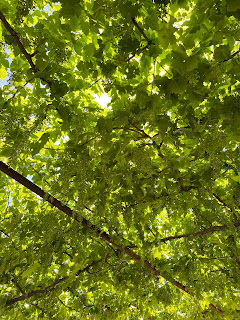We began our morning in Fresno, California where we grabbed breakfast round nine and hit the road for a 45-minute drive to Stratford, California where we visited Ryan, who raised sheep for grazing on land that also had solar panels. The energy created from the solar panels is sent down to Los Angeles. The sheep were there on pasture way before the solar panels were put in and Ryan bought the farm from his parents in 2009. With California’s very hot and dry weather the panels allow for dripping that creates strips of grass for the sheep to graze. Ryan’s operation had about 2,100 acres of a rotation that was going and the field of panels that we saw today had 457 lambs on 460 ewes. These solar panels were made for a variety of reasons; those being, a good height for workers to make repairs, for mowers to move under them and especially the sheep to do their grazing. Sheep are the only animal “designed” for this height of panel because they can move under it and won’t destroy them compared to goats who look up and would jump on the panels and chew the wires. Cattle would also serve as a destructive animal on the area as well. The sheep are fed a mineral block, but that is the only supplemental feeding they get because they are accustomed to feeding on the paneled pastures. In mid-July, the 1,000 head of sheep would get 5,000 gallons of water trucked to them a day. There is a head sheep herder that controls both farms and “trains” the sheep dogs. Training the sheep dog isn’t like training other dogs, you are supposed to leave them alone and they must create a bond or relationship with the sheep to protect it. These dogs are more guard dog than herding dogs, so when there is a coyote intruding, they scare it off and protect the sheep instead of chasing it for miles. We saw four sheep dogs today and three of them were puppies, the father of the puppies is 150 pounds, and they are naturally supposed to be aggressive because that is their job.
After this stop, we traveled to Shafter, California. This was where we toured “Grapery.” Here we were led by Yi, who walked us through the differences between table and wine grapes, grafting grapes, the growth of grapes and a vineyard, the development of the fruit, and the packaging and storing. One interesting aspect of this company is they have a company they work with to create exclusive and unique grapes such as the Cotton Candy grape and Moon Drop grape. Table grapes are grown with high yields, uniformity and appearance in mind, whereas with wine grapes, producers are focused on the smaller size and stressing of the plant to help get the characteristics needed in wine. The table grapes sold in stores vary in their origin depending on the season. Grapes from California are usually in stores from July through October. Other months are grapes imported from Mexico and other foreign countries. The grapes are first grafted on a root stock. Then after two years of vegetive growth, the vines grow fruit in the third year. They are pruned to make sure the grapes grow well. The grapes are harvested in July, with the first going straight to stores, and the rest stored in a large cooler to be shipped out over the next few months.
When this stop concluded, we drove to Bakersfield to spend the night before driving to Las Vegas for our flights home tomorrow.





Comments
Post a Comment